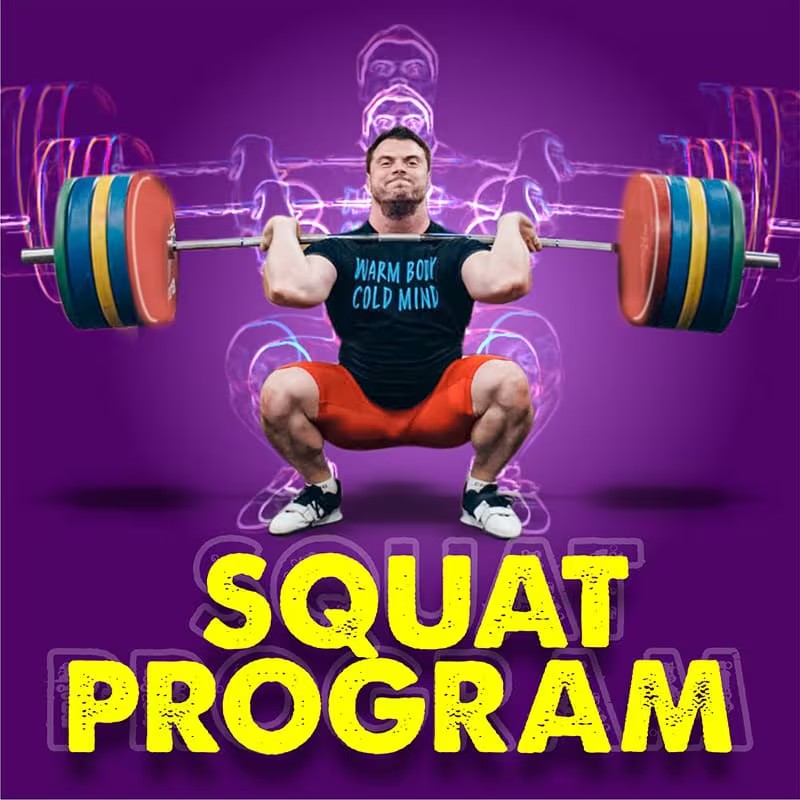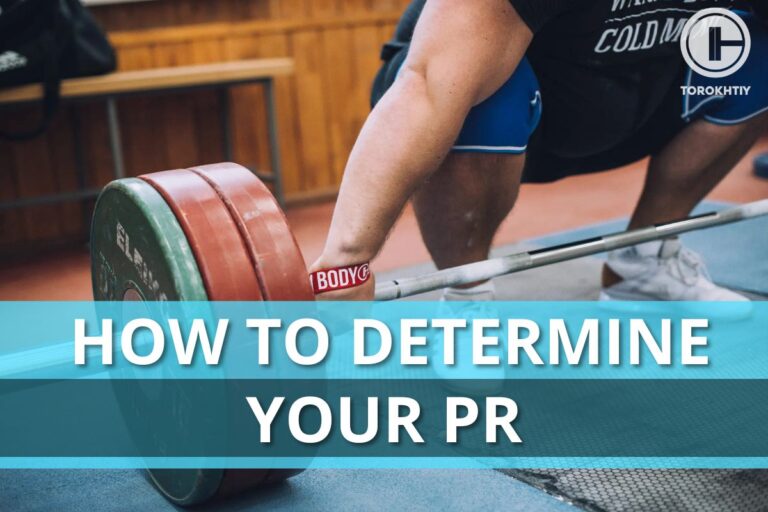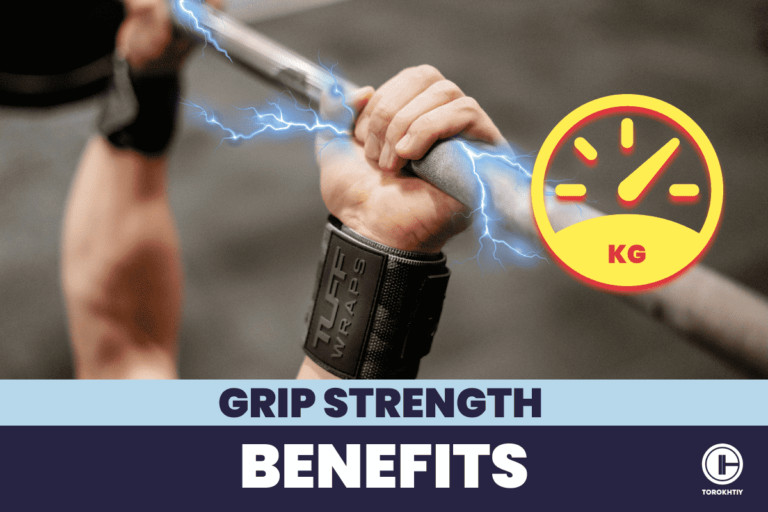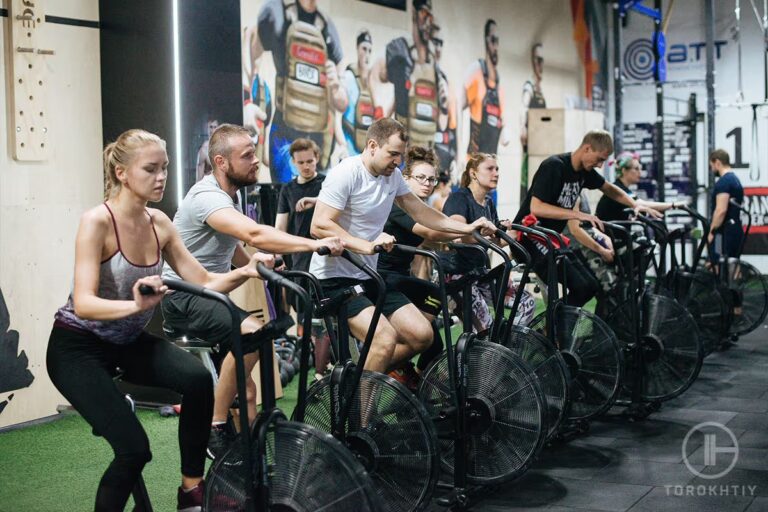Are squats bad for your knees?
Are squats bad for your knees? For years, gym-goers and fitness enthusiasts have debated the effect of squats on knee health despite their effectiveness in strengthening lower-body muscles.Squatting with bad knees can be challenging, but it’s not necessarily off the table. The key is to approach it cautiously and consider your specific condition. In this article, we will explore the impact of squats on knee health and separate fact from fiction.
Are squats bad for your knees? When performed correctly, Squats can strengthen knees and offer various benefits. However, improper form or pre-existing conditions may be harmful to your knees.
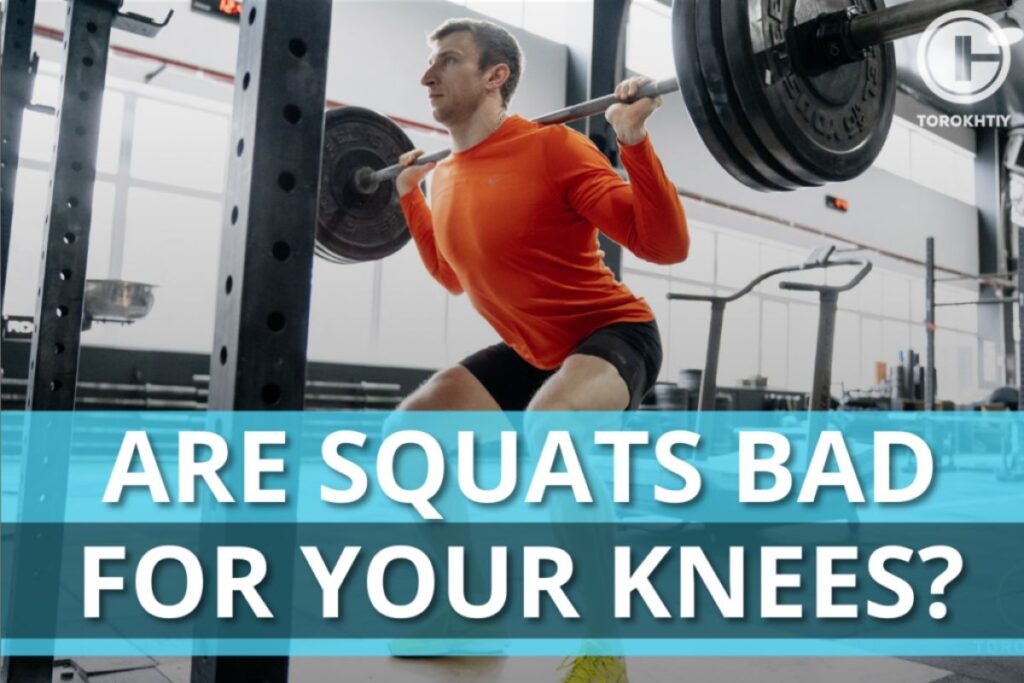
Is Squatting Bad for Your Knees?
Squats are a basic movement pattern that humans have used for centuries. In the past, people used to perform their daily activities in a full squat position. This movement pattern works multiple muscle groups, such as the quadriceps and glutes, and can improve lower extremity strength, promote muscle growth, and enhance joint stability when performed correctly. However, doing squats with improper form or excessive weight can put unnecessary strain on the knee joint. The knee joint comprises bones, ligaments, and cartilage, and squatting with incorrect techniques can stress these structures, leading to injuries.
Why Do Squats Hurt Your Knees?
“Understanding why discomfort arises is key to effectively addressing it. Here are some of the most common reasons that discomfort can occur.”
1. Poor Form
Improper form is one of the leading causes of knee discomfort while performing squats. If you fail to maintain the correct technique, there is a significant risk of injury. Some common form mistakes include not aligning your knees with your toes, allowing your knees to cave inward, or squatting too deep or shallow. These mistakes stress your knee joint and surrounding structures unnecessarily, leading to discomfort or injury over time.
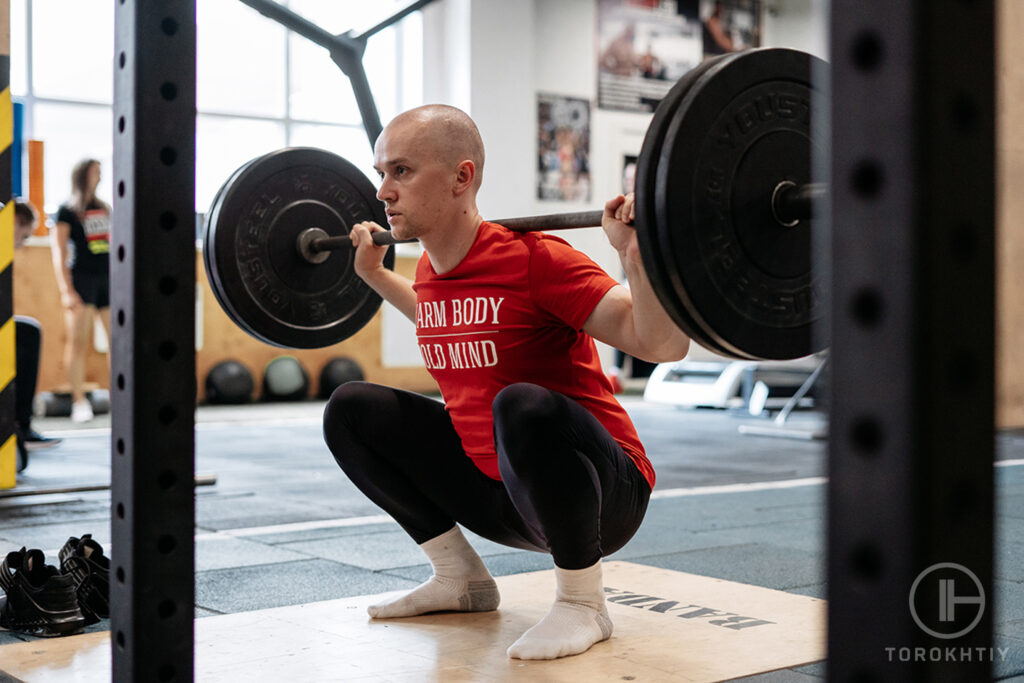
2. Overloading
It’s important to be careful of overloading when lifting weights as it can strain the knee joint and surrounding tissues, leading to acute injuries or chronic discomfort. To avoid this, it’s essential to increase the weight and resistance gradually and in a controlled manner, allowing time for the knees to adapt and strengthen without unnecessary strain. Experts suggest implementing a periodization plan in your training to optimize strength gains while reducing the risk of overtraining and burnout. Periodization involves cycling through different phases of intensity and volume and tracking your progression.
3. Pre-Existing Conditions
If you have knee problems such as arthritis, meniscus tears, or ligament injuries, you may face difficulties when considering squats as an exercise. In some cases, squats can worsen your discomfort, making it unsuitable. If you have any of these conditions, seek advice from a healthcare professional like a physical therapist before adding squats to your fitness routine.
They can comprehensively assess your situation and guide you on whether squats are safe. Additionally, they may suggest alternative exercises or modifications tailored to your needs, allowing you to work towards your fitness goals while maintaining proper knee health.
🔻12 Week Squat Program by Oleksiy Torokhtiy
Do you want to double your squat strength? In just 12 weeks, you’ll be able to boost your squat results.
This program transforms any ordinary squat into a powerful athletic movement.
What’s included:
- 12 weeks of squat programming;
- Effective combination of sets, reps, and weights;
- Fully designed and coached by Oleksiy Torokhtiy;
- Over 60+ movements, banded work, and weight training;
- Accessory work for core, joint stability and injury prevention;
- Max out on back squat and front squat at the end.
Start now and boost your squat results!
How to Do Squats Correctly?
Performing this exercise is crucial for maximizing benefits and minimizing injury risk. To get the full benefits of this exercise while reducing the risk of injury, you must perform it precisely and carefully. Trust me, taking the time to do it correctly will be well worth it.
1. Stance
Start by standing with your feet shoulder-width apart and your toes turned slightly outward. This helps maintain proper knee alignment and distributes weight evenly to reduce knee stress during squats.
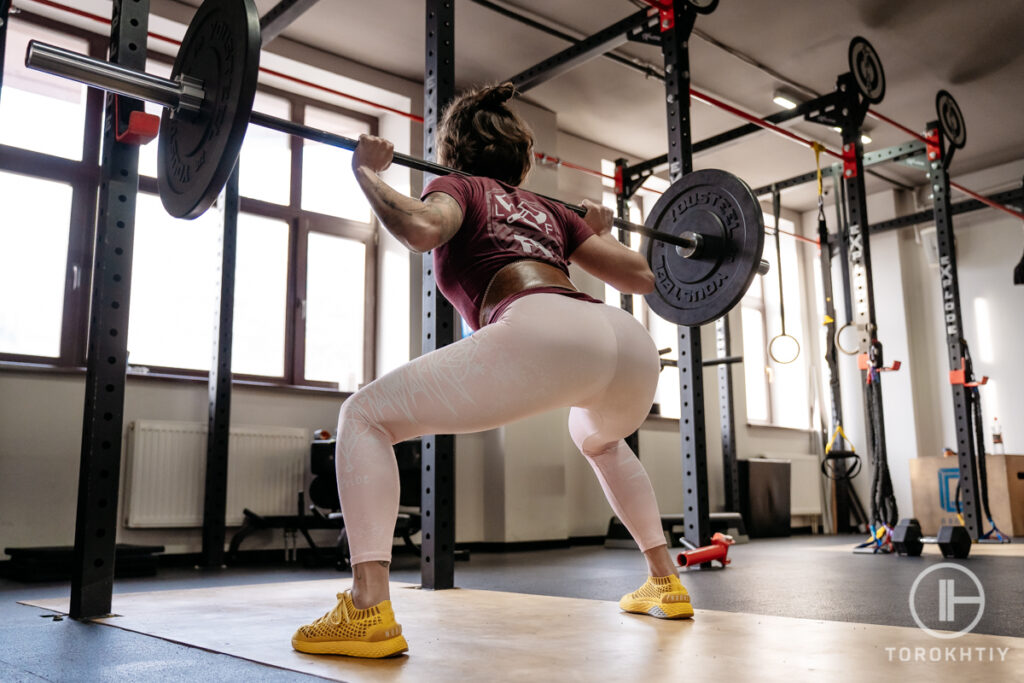
2. Posture
During a squat, maintain an upright chest, straight back, and relaxed shoulders to promote proper biomechanics and protect your lower back.
3. Depth
To perform a squat correctly, imagine sitting back in a chair as you descend, ensuring your knees do not go past your toes. It is crucial to avoid putting too much pressure on the knee joint. The ideal depth to aim for is where your thighs are parallel to the ground or slightly below it. This will enable you to engage your leg muscles effectively while minimizing knee stress.
4. Breathing
When you’re doing squats, it’s crucial to concentrate on your breathing. Inhale as you lower your body and exhale as you push back up. This breathing technique helps to stabilize your core, increase your overall strength, and provide crucial support for your knees.
5. Control
Maintaining control throughout the entire squat movement is crucial to avoid injury. Abrupt or jerky motions can increase the risk of getting hurt. When lowering and raising the weight, it is vital to do it deliberately and controlled. A controlled squat engages your muscles correctly and protects your knees from undue strain.
By strictly adhering to these fundamental principles of squat execution, you can take advantage of the numerous benefits of this exercise while safeguarding the health and longevity of your knees. Proper form and technique are vital in achieving stronger and healthier lower-body fitness.
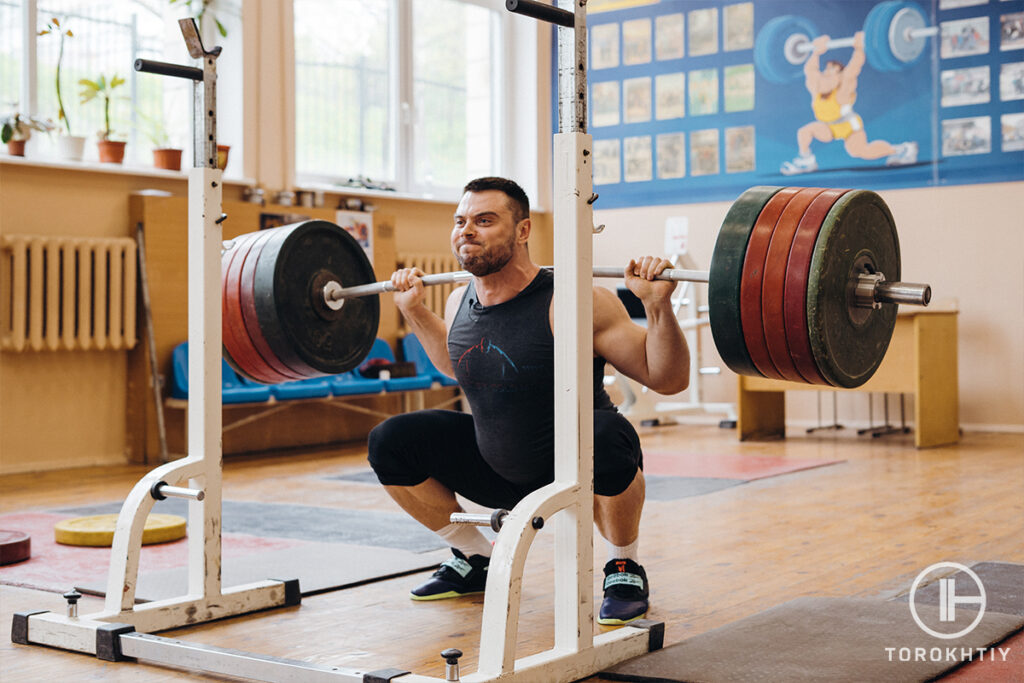
Squats for Rehabilitation
Are squats good for your knees? How do squats strengthen knees?
Squats are often thought to be harmful for people with arthritic knees or injured joints. However, when done correctly, squats can aid in rehabilitation and be an essential part of the process. Squatting fully is a good indicator of one’s overall fitness level and biomechanics. Squatting requires trunk stability and extremity mobility, involving flexing the ankles, knees, and hips while keeping the core strong to maintain an upright torso. The squat is a functional movement that we should always retain.
If you want to improve your knees through squat exercises, here are three critical tips to keep in mind:
1. Consult a Professional
To improve knee health, progress gradually with the guidance of a healthcare provider or trainer. Adding weight to squats should be done judiciously to minimize the risk of knee overload. Gradually increasing squat intensity prepares knees to handle the added load, enabling a confident journey towards stronger knees.
2. Start with Body Weight
Gradual progression is critical to improving knee health. Add resistance or weight to squats judiciously, under supervision. Minimizes the risk of overloading your knees. Gradually increasing squat intensity will prepare your knees for added load, allowing you to progress towards stronger and healthier knees confidently.
3. Gradual Progression
To ensure knee health, gradually increase squat intensity with professional guidance. Avoid overloading knees by adding weight judiciously. Achieve stronger and healthier knees with confidence.
Squat Modifications/Squat Variations to Reduce Knee Pain
If you want to prevent knee discomfort during squats, don’t hesitate to incorporate these knee-friendly squat variations.
1. Box Squats
When it comes to preserving knee health during squats, specific variations can be particularly beneficial. One such option is the Box Squat. Place a bench or box behind you. This simple addition will limit your range of motion, preventing you from descending too far and putting excessive stress on the knee joint.
Doing so will allow you to maintain proper form throughout the exercise while providing valuable support to your knees.
2. Goblet Squats
Another valuable variation to consider is the Goblet Squat. In this variation, you hold a dumbbell or kettlebell close to your chest as you perform the squat. Making this seemingly minor adjustment can significantly impact your squat mechanics. It shifts your center of gravity, which promotes a more upright posture.
This proper posture can help reduce the strain on your knees and encourage a safer squatting experience, especially for those with knee concerns.
3. Bulgarian Split Squats
For those seeking to mitigate knee stress further, the Bulgarian Split Squat offers an excellent alternative. Performing a single-leg squat variation can be a great way to work out your lower body while reducing the load on each knee separately. This exercise can also help improve balance and stability, essential for maintaining healthy knees.
By incorporating these variations into your routine, you can enjoy the benefits of squats while minimizing the risk of worsening any knee discomfort or issues you may be experiencing.
4. Wall Squats
The wall squat involves standing with your back against a wall and performing squats by sliding down the wall, mimicking the motion of sitting in an imaginary chair. The division provides crucial support, helping to maintain proper form and reduce the risk of knee strain during squats for maximum effectiveness.
5. Elevated Heel Squats
Placing small weights or an object under your heels during squats creates an elevated heel effect. The division provides essential support and helps maintain proper form during squats, reducing knee strain and maximizing effectiveness.
6. Sumo Squat
Sumo squat is a type of squat characterized by a wide stance and outward-turned toes. It can help alleviate knee discomfort. There are various variations of sumo squat, but here are two examples.
These variations reduce direct knee stress, engaging inner thigh muscles for improved stability. Proper form is essential; consulting a healthcare professional for personalized guidance is wise, especially if you have knee issues.
FAQ
Can Squats Damage Knees?
Squats are usually safe and can strengthen knee muscles. Incorrect technique, excessive weight, or pre-existing knee conditions can increase injury risk. Use proper form, start with manageable weights, and seek guidance from a fitness professional before incorporating squats into your workout.
Do Squats Strengthen Knees?
The short answer is yes. Squats strengthen knee muscles and improve stability while engaging quads, hamstrings, and glutes. Begin with light weights, focus on proper form, and gradually increase intensity to prevent injury.
Is Squatting Bad For Knee Cartilage?
Squats done correctly with appropriate weights and form can help improve knee muscle strength and stability, reducing the risk of knee issues. Poor form, excessive weight, or underlying knee problems can lead to stress on knee cartilage over time. Prioritize proper form, start with manageable weights, and consider consulting a healthcare professional or physical therapist if you have concerns about knee health.
Conclusion
Squats are a fundamental exercise in strength training and daily activities. They benefit athletes, fitness enthusiasts, and anyone wanting to improve their mobility and strength. However, squatting with bad knees can be challenging but possible.
If you suffer from chronic knee pain or have pre-existing knee problems, it is essential to consult a healthcare professional or physical therapist before attempting squats. They can provide personalized recommendations, modifications, or alternative exercises to avoid discomfort and protect your knee health.
It is also crucial to prioritize proper form and start with no or minimal weight to reduce the strain on your knees. These precautions will help you incorporate squats into your fitness routine and reap the benefits of this valuable exercise. Remember, a mindful and informed approach to training is necessary to achieve your fitness goals and protect your well-being. If you have any questions or concerns, please contact us below the article.
References:
- Sunny Health and Fitness. https://sunnyhealthfitness.com/blogs/health-wellness/bodyweight-squats-benefits-forms
Why Trust Us?
With over 20 years in Olympic Weightlifting, our team does its best to provide the audience with ultimate support and meet the needs and requirements of advanced athletes and professional lifters, as well as people who strive to open new opportunities and develop their physical capabilities with us.
By trusting the recommendations of our certified experts in coaching, nutrition, dietology, and sports training programming, as well as scientific consultants, and physiotherapists, we provide you with thorough, well-considered, and scientifically proven content. All the information given in the articles concerning workout programming, separate exercises, and athletic performance, in general, is based on verified data. We ensure that you can rely on our professionals’ pieces of advice and recommendations that can be treated as personalized ones which will benefit you and fully meet your needs.
The product testing process is described in more detail here
Author: Ernesto Mendez
Orthopedic Clinical Specialist
Best Results: Snatch – 208 kg,
C&J – 240 kg
Dr. Ernesto Mendez is a licensed physical therapist, a board Orthopedic Clinical Specialist (OCS) and founder of Movement 4 Wellness Physical Therapy, LLC. He earned his degree from Thomas Jefferson University. He is also an Olympic weightlifting coach (USAW L1) and Functional Fitness Level 1 Trainer. His experience includes the areas of pain management, movement analysis, injury recovery, surgical rehab, corrective exercise, and athletic, military, and occupational performance. Dr Mendez is passionate about Olympic weightlifting and fitness. Ernesto Mendez is responsible for designing multiple training programs, writing blog articles, posting daily weightlifting content, doing live weightlifting and mobility seminars.

